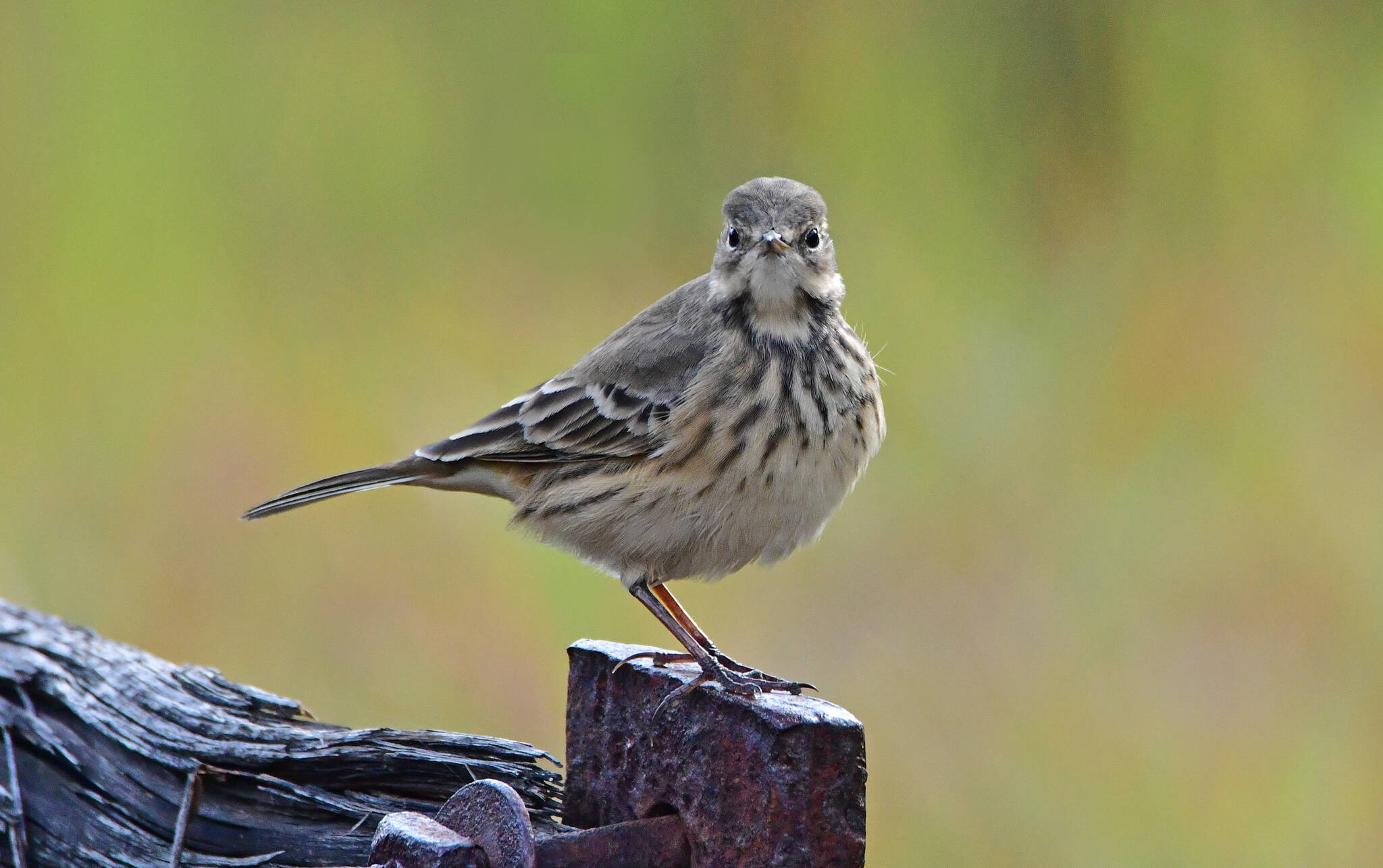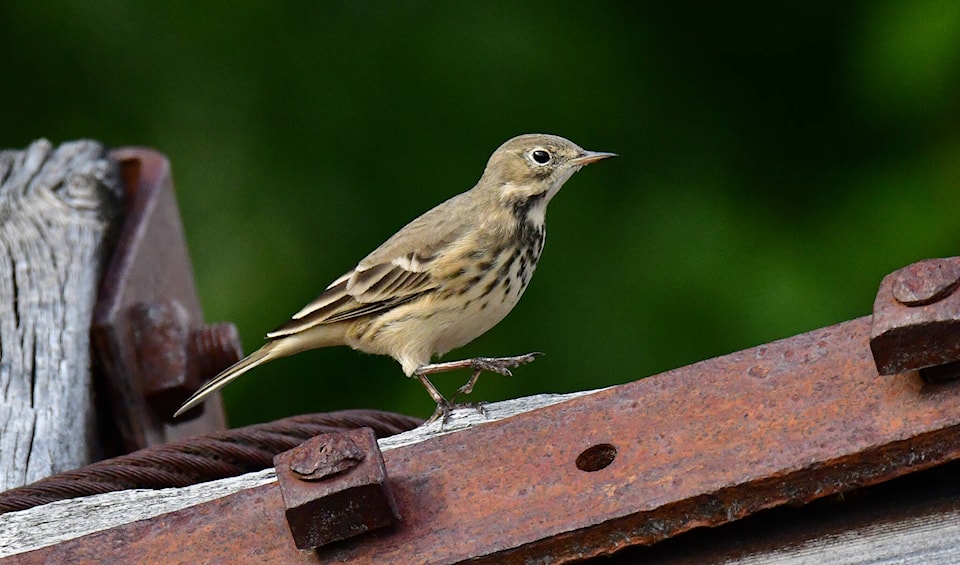Each spring and each fall, I watch for migrating American Pipits. These interesting but understated birds sweep through Alberta during migration, often in large loose flocks that flit about in fields and along roadsides. They breed in the treeless alpine meadows in the Rocky Mountains as well as on the arctic tundra. They overwinter in Central America.
Last week, while enjoying some back road rambles north of Pincher Creek, we were surprised to see a huge flock of American Pipits. We stopped the vehicle and counted upwards of 200 individuals, which were resting on power lines, perched on fenceposts and on barbed wire, and walking in the ditches and on the road. What an interesting sight!
American Pipits belong to a unique family of ground-feeding and ground-nesting insectivorous birds, the Motacillidae. There are two species in Alberta – American Pipits and the prairie-nesting Sprague’s Pipit. Both species have small scales on their legs, and their long back toes enable them to walk easily – as opposed to hopping – on the ground. These long toes can most easily be seen at close observation or in photographs. Their subtle coloration enables them to blend into the drab spring and fall landscapes, but their habit of bobbing their tail – combined with the characteristic gait – makes it easy to tell them from other bird species.
Someday, I hope to witness the courtship ritual of the American Pipit. Males arrive on the breeding grounds early, often when the ground is snow-covered. They will fly up into the air about 30 metres before parachuting downward – while singing – in a dramatic spiral. This display serves to both attract mates and to delineate their territories.
American Pipits, while considered common throughout their range, have experienced recent population declines. Climate change may potentially affect the future quality of their high-latitude and high-altitude breeding habitat.
If you are out and about in the country over the next week or so, take the time to scan the power lines, fields and roadsides for these beautiful birds.
Myrna Pearman is a retired biologist, and a keen nature writer and photographer. She has written several books, which can be ordered from www.myrnapearman.com. She can be reached at myrna@myrnapearman.com

